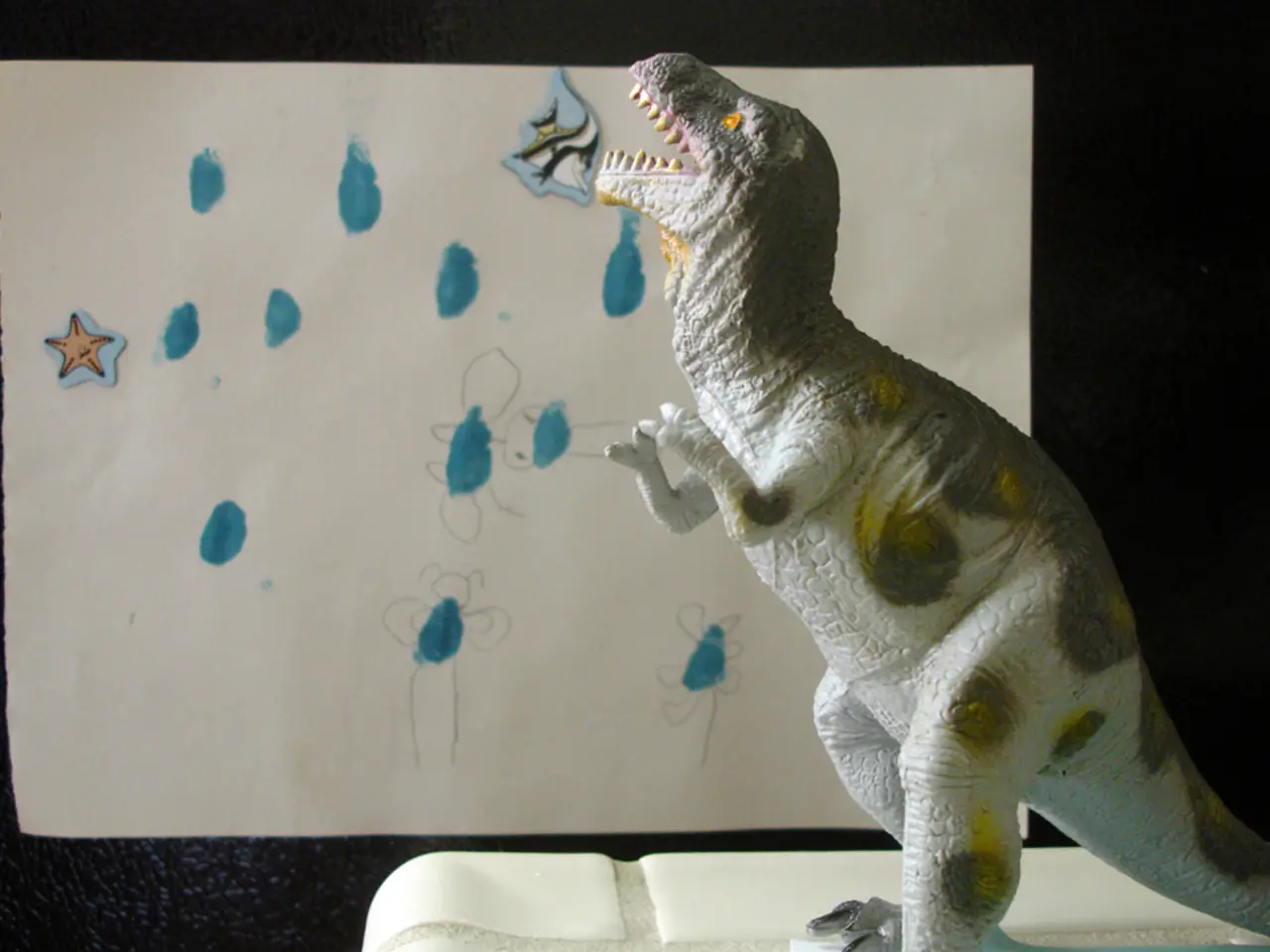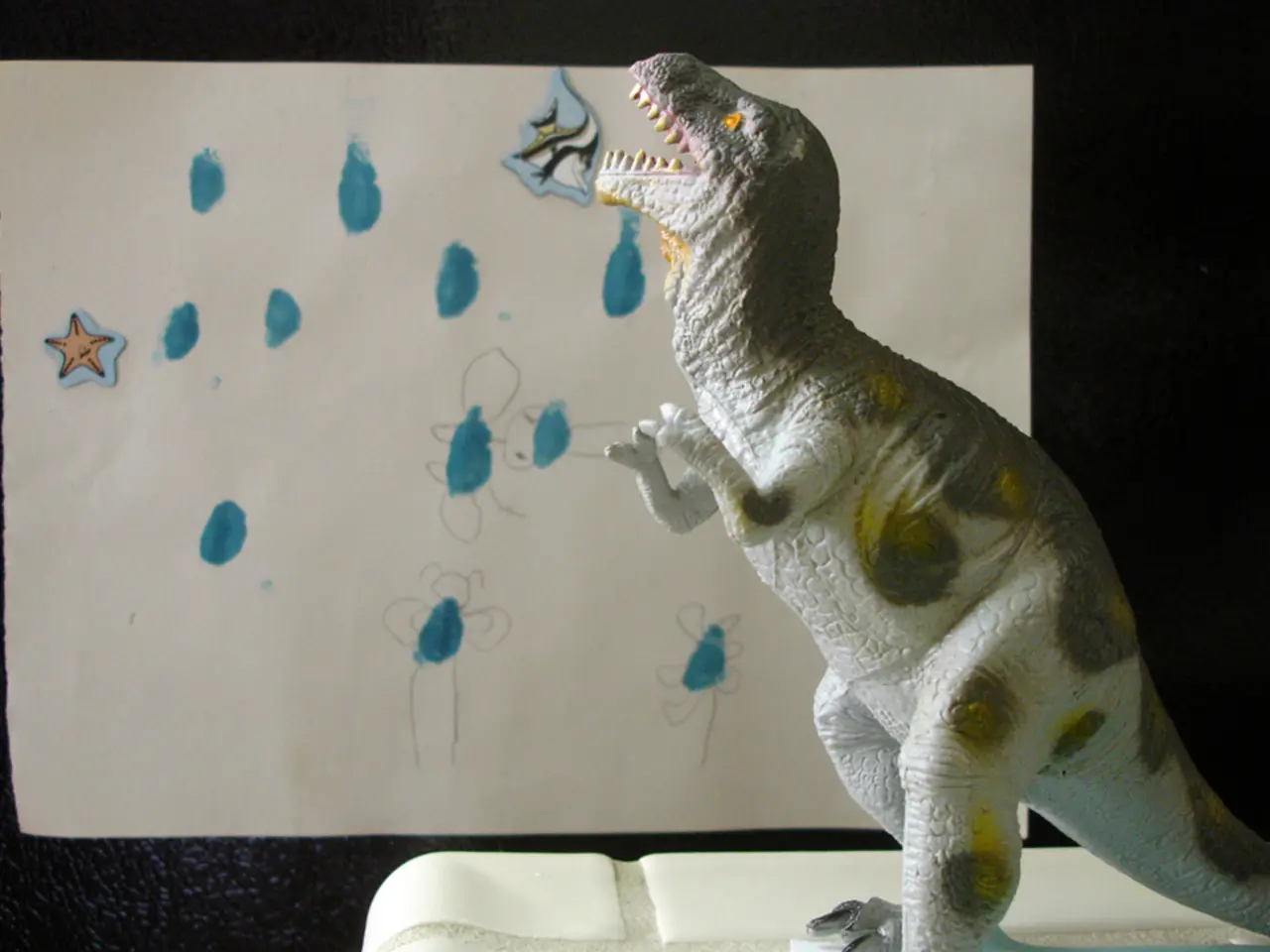Analysis of fossil teeth sheds light on the dietary habits of the largest dinosaurs
In a groundbreaking study published in Nature Ecology and Evolution, researchers have delved into the enigmatic world of sauropods, long-necked herbivorous dinosaurs that roamed the Earth 201 to 145 million years ago. The research, led by Daniela Winkler of Kiel University in Germany, offers fascinating insights into the sauropods' diet and behaviour during the Jurassic period.
## Key Findings
The study analysed microscopic enamel wear on sauropod tooth fossils from three fossil sites: the Lourinhã Formation in Portugal, the Morrison Formation in the US, and the Tendaguru Formation in Tanzania. A total of 39 individual sauropods were studied, with 322 high-resolution 3D scans of their teeth examined.
One of the most intriguing findings was the dietary diversity among sauropods. The analysis revealed significant differences in dental wear patterns among various sauropod groups, indicating diverse feeding behaviours. For instance, the flagellicaudatans, a subgroup that includes *Diplodocus*, showed high variability in wear patterns, suggesting they had access to a variety of food sources and exhibited generalist feeding behaviour.
Another interesting observation was made about the *Camarasaurus*. Specimens from both Portugal and the US had highly uniform wear patterns. This uniformity in microwear suggests that these dinosaurs deliberately sought out the same preferred food sources throughout the year, which is unlikely to be explained solely by uniform plant availability.
## Implications
The study highlights the importance of microscopic enamel wear analysis as a tool for understanding ancient diets and behaviours. These tiny wear marks can reveal what animals ate in their last days or weeks, providing insights into their feeding strategies.
The findings also offer a glimpse into the ecosystems sauropods lived in about 150 million years ago. By understanding how these massive herbivores sustained themselves in their environments, we can better appreciate the complexity of the ancient world.
Sauropods, including the colossal titanosaurs, were able to reach enormous sizes by exploiting diverse feeding strategies. The ability to adapt to different food sources likely played a crucial role in their success as herbivores.
## Future Directions
Researcher Daniela Winkler expresses excitement about refining the method and gaining a better understanding of ancient life. The research team emphasises that they are still at the beginning of understanding the method's potential, but interdisciplinary collaboration can provide fascinating insights into ancient worlds. The analysis can potentially be applied to more ancient teeth, offering a wealth of information about our prehistoric past.
The Tendaguru Formation during the Jurassic had a tropical to semi-arid climate and was near a large desert belt. Sauropods from Tanzania had complex and intense wear patterns on their teeth, suggesting specific environmental conditions. Windswept sands from the desert could have been blown onto the plants eaten by sauropods, leaving deep wear marks on their teeth.
The climate during the Jurassic period in both Portugal and the US was highly seasonal, which may have necessitated seasonal migration for some sauropods. Co-author André Saleiro states that the research related dental wear patterns to palaeogeography and the habitat preferences of different sauropod faunas.
In conclusion, this study provides a significant step forward in understanding the diet and behaviour of sauropods. The findings not only shed light on these ancient giants but also offer a window into the complex ecosystems they inhabited. As researchers continue to refine the method, we can expect to uncover even more intriguing details about our prehistoric past.
Science and technology have been instrumental in revealing new insights about the enigmatic world of sauropods. The microscopic enamel wear analysis, a tool from environmental-science, has allowed researchers to delve into the diets and behaviors of sauropods during the Jurassic period. This study, published under education-and-self-development, has demonstrated the long-necked herbivores' diverse feeding strategies and the role of climate-change in shaping their environments.




